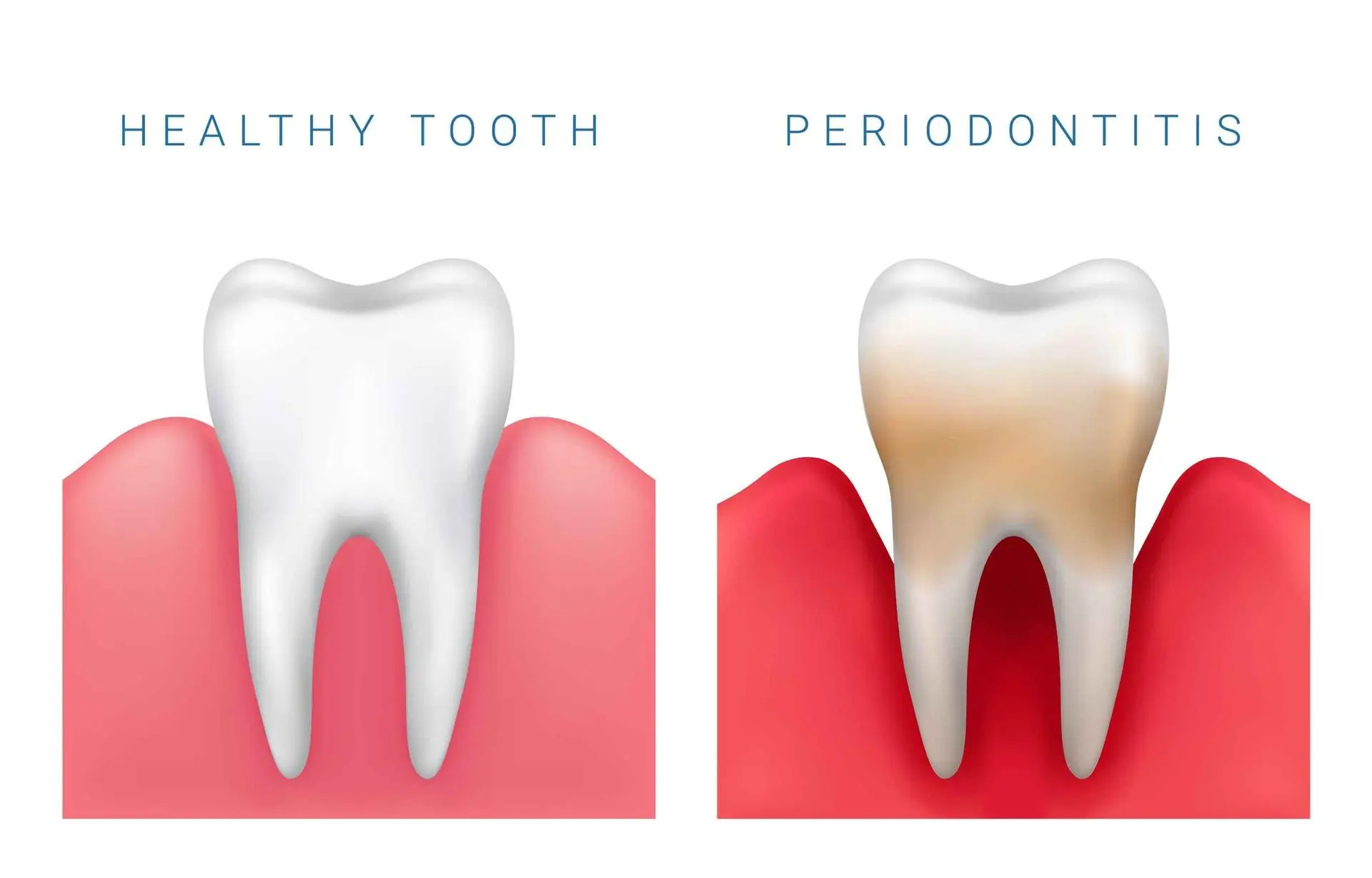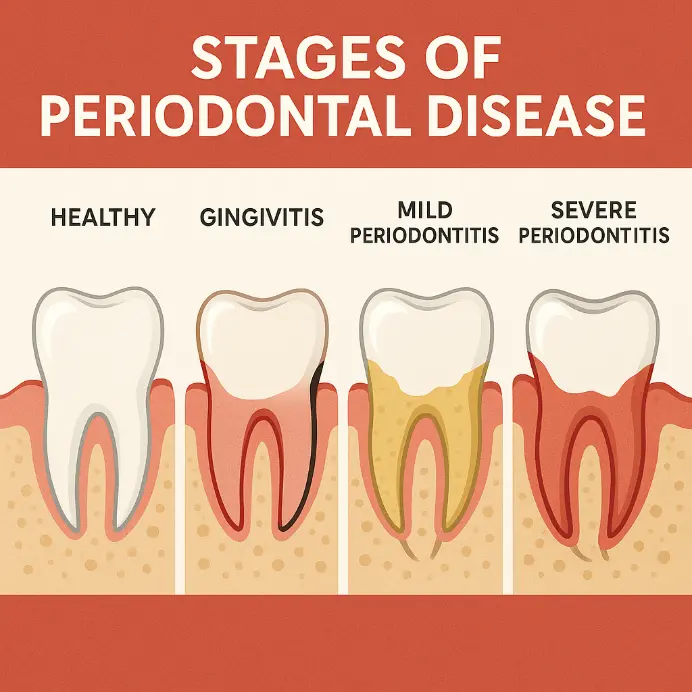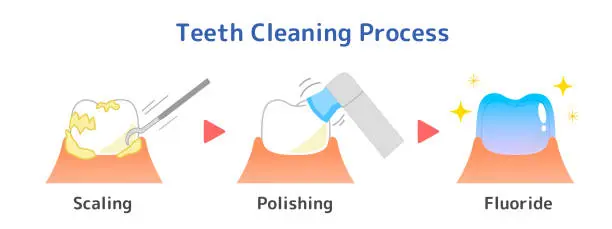Periodontal Disease
- Your gums bleed when you brush your teeth
- You have bad breath that doesn’t go away
- Your mouth feels sticky or uncomfortable when you wake up
- Your gums feel itchy, look red, or bleed when you press on them

Periodontal disease is a mouth infection caused by bacteria that build up in plaque and tartar. It usually starts with gum inflammation, but if it isn’t treated, it can lead to the breakdown of the bone that holds your teeth in place—eventually causing tooth loss. The tricky part is that once the bone is gone, it doesn’t grow back naturally.
Why do so many people lose teeth because of it?
One big reason is that periodontal disease often doesn’t cause obvious pain or symptoms early on. In fact, around 80% of adults are said to have it, but most don’t even realize it. By the time symptoms become noticeable, the disease is usually already quite advanced—and that makes it harder to treat.
Is it possible to have cavities and gum disease at the same time?
Having no cavities doesn’t mean you're safe from periodontal disease. In fact, if you get treatments like implants but ignore gum health, plaque and bacteria can build up around the implant and lead to periodontal disease. If that happens, all the hard work that went into the treatment could end up being lost.

There’s a small gap between your teeth and gums called a periodontal pocket. When plaque and tartar build up, bacteria start to grow and cause gum inflammation. As the disease gets worse, these pockets deepen, making it harder for regular brushing to clean out the bacteria—allowing the disease to spread even faster. That’s why professional cleaning at the dental clinic is essential to remove the bacteria hidden deep in these pockets.
Check how far the disease has progressed
Even if your teeth feel fine, it’s important to get checked. Dental exams look at plaque, tartar, and the depth of your periodontal pockets to see how advanced the condition is.

Clean out hidden bacteria
Brushing alone can’t reach deep plaque and tartar, so dental hygienists use special tools to clean it out. Unlike minor cavities, gum disease takes time and consistent care to manage—regular dental visits are key.

Prevention is better than cure
While dental treatments and medications can help, the best approach is preventing gum disease in the first place. Brushing properly every day and visiting your dentist regularly are the most effective ways to protect your gums and teeth long-term.